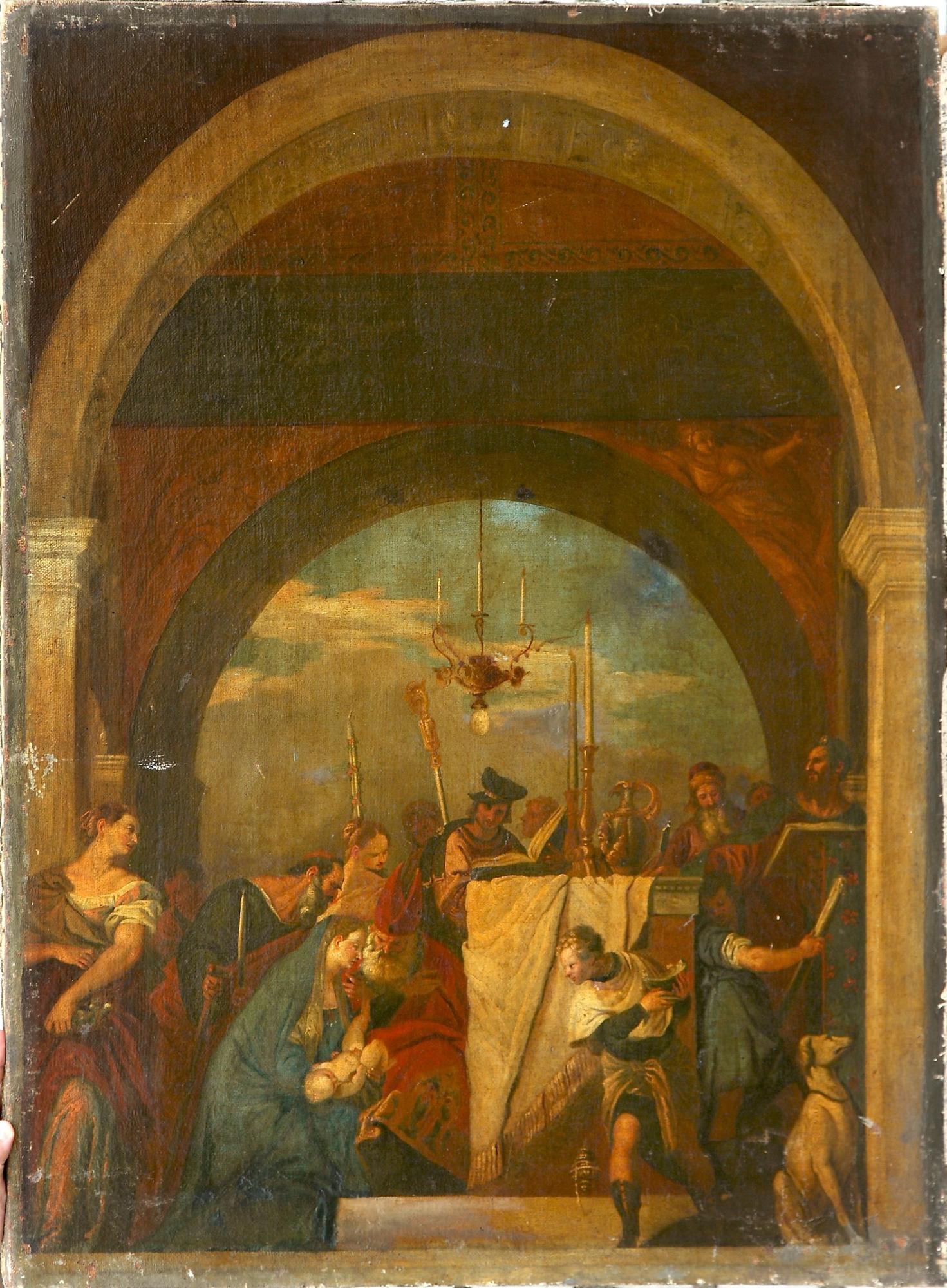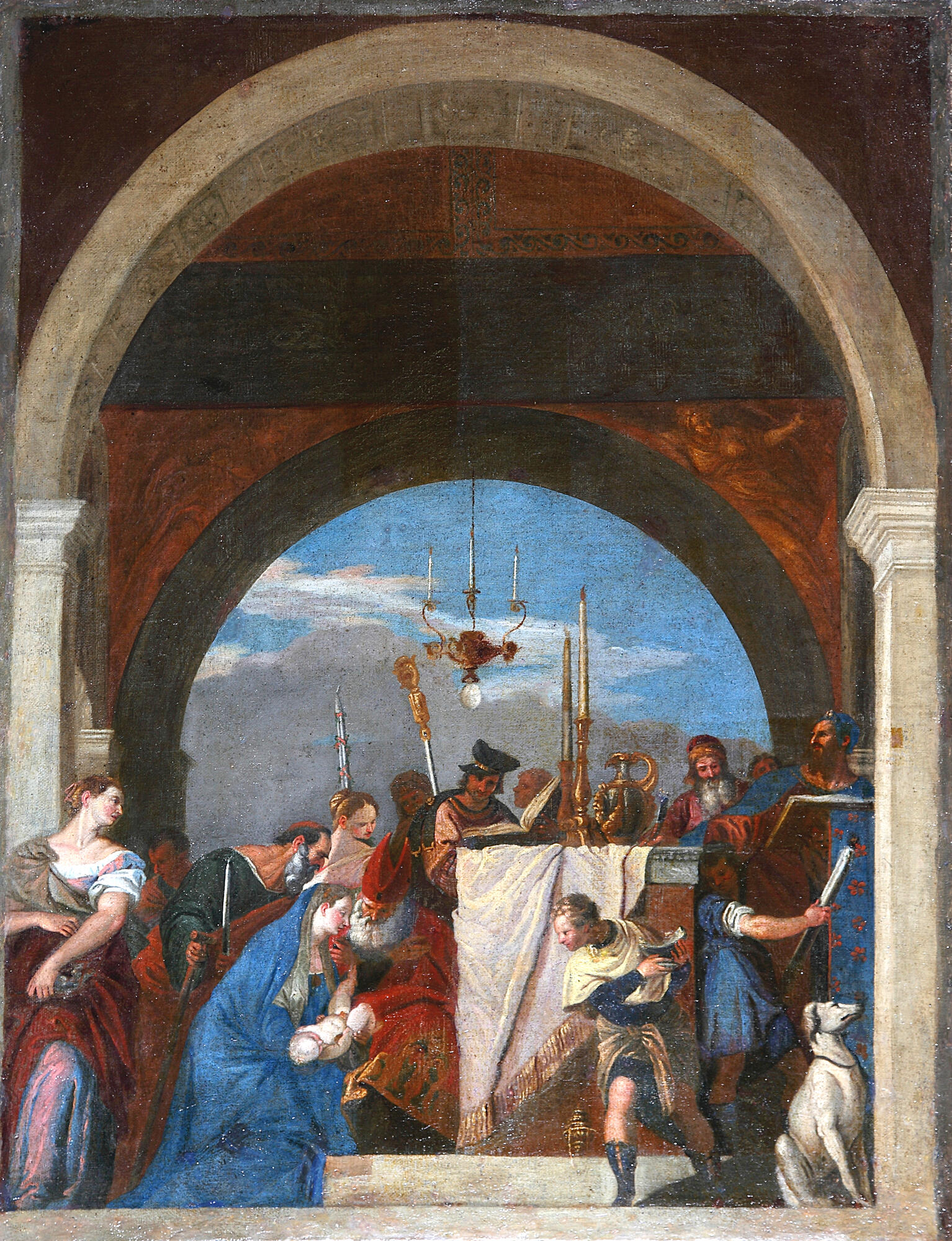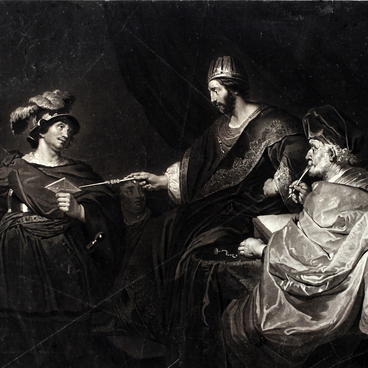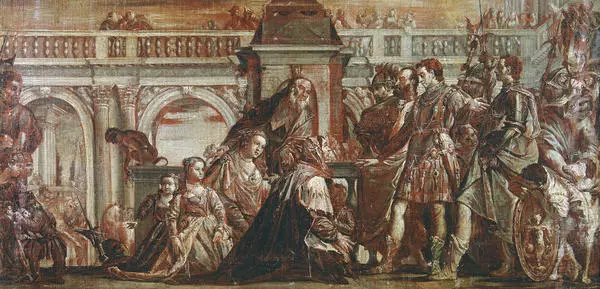Paolo Caliari, known as Veronese, is an Italian late Renaissance artist. He is considered to be a maestro of monumental paintings, frescoes and large-scale compositions with sophisticated angles. The artist borrowed the manner of painting from Titian and Tintoretto, and the liberal secular interpretation of religious and mythological scenes from Raphael.
1 / 2
Presentation at the Temple
Creation period
16th c.
Dimensions
95x74 cm
Technique
canvas, oil
Collection
2
Open in app#1

Paolo Caliari Veronese
Presentation at the Temple
#2
#5
The Presentation at the Temple is a preparatory study for the painting on the organ doors in the church of San Sebastiano in Venice. In 1558, the artist showed the sketch of the painting for the church instrument to the monks. The organ was made, and two years later Veronese finished its decoration with the painted panels.
The artist covered the inner doors with the Biblical scene Christ Healing the Sick; the outer doors with the composition Presentation of the Infant Christ at the Temple. The paintings are made by Veronese in such a way that the columns and the arch on the doors of the organ continue the real architecture of the church.
The artist covered the inner doors with the Biblical scene Christ Healing the Sick; the outer doors with the composition Presentation of the Infant Christ at the Temple. The paintings are made by Veronese in such a way that the columns and the arch on the doors of the organ continue the real architecture of the church.
#6
Christ Healing the Sick, Veronese. Contemporary view. img via: commons.wikimedia.org
Veronese placed the scene of the Nativity of Christ on the outside of the balcony, two figures of Virtues on both sides of the organ and colored images of St Francis and St Jerome. Veronese made a similar painting for the organ in the San Gimignano Church at St. Mark’s Square in Venice.
#9
When the church was destroyed during the Napoleonic occupation, these paintings were transferred to the Galleria Estense, Modena.
#8
The Presentation at the Temple, or the Meeting of the Lord, is an important theme for Western art. In the Catholic tradition the scene is also called the Purification of Mary. The Virgin Mary and Joseph the Betrothed brought Jesus Christ to the Temple of Jerusalem on the fortieth day of His life — the law required every first-born be dedicated to God. A ransom of five silver coins, shekels, would be paid for the baby. At the same time, they performed the Jewish rite of purification of the mother: two doves or two young pigeons would be sacrificed.
In the Temple, the Holy Family was met by the righteous Simeon the God-Receiver who lived in Jerusalem. He was one of the 72 scholars who translated the Holy Scripture into Greek in the 3rd century B.C. During his work he doubted the phrase about Mary “Behold the Virgin”, but the angel prevented him from correcting the words into “Behold the Wife” and promised the translator that he would not die until he had seen the fulfillment of the prophecy. Three centuries later, the angel’s words became life, and Simeon personally spoke with the Virgin Mary and blessed the Infant Christ. Simeon passed away after that meeting.
In the Temple, the Holy Family was met by the righteous Simeon the God-Receiver who lived in Jerusalem. He was one of the 72 scholars who translated the Holy Scripture into Greek in the 3rd century B.C. During his work he doubted the phrase about Mary “Behold the Virgin”, but the angel prevented him from correcting the words into “Behold the Wife” and promised the translator that he would not die until he had seen the fulfillment of the prophecy. Three centuries later, the angel’s words became life, and Simeon personally spoke with the Virgin Mary and blessed the Infant Christ. Simeon passed away after that meeting.
#10
Irbit State Museum of Fine Arts
read morehide
00:00
00:00
1x
Presentation at the Temple
Creation period
16th c.
Dimensions
95x74 cm
Technique
canvas, oil
Collection
2
Open in app
Share






